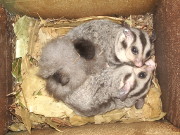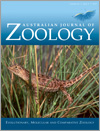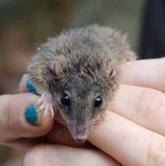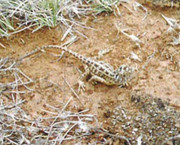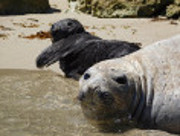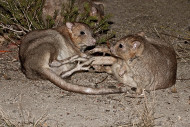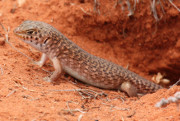Australian Journal of Zoology
Volume 65
Number 3 2017
Effective management of species requires detailed knowledge of key population parameters. We conducted capture–mark–recapture of the squirrel glider (Petaurus norfolcensis). The overall probability of annual apparent survival was 0.49 ± 0.08. Estimates of population size varied markedly over our 4-year study, but suggested this population near Brisbane was in decline.
Photo by Ross Goldingay.
We examined diet composition and prey preference of the buff-footed antechinus (Antechinus mysticus) in its southernmost and northernmost populations. Diet was dominated by Araneae (spiders), Blattodea (cockroaches) and Coleoptera (beetles). A. mysticus is evidently a dietary generalist, opportunistically consuming mostly invertebrate prey with supplementary predation on small vertebrates.
Photo by Kevin Stone.
Populations of the endangered grassland earless dragon, Tympanocryptis pinguicolla, from two elevations were compared for seasonal preferred temperature in a laboratory temperature gradient and in the field using radio-telemetry and chest temperature measurements. These data and operative temperatures in various microhabitats indicate that these lizards are moderate thermoregulators.
Photo by L. S. Nelson.
Southern elephant seals typically breed on subantarctic islands. We report on the successful weaning of a female southern elephant seal in Western Australia born to a first-time breeding mother in November 2016. This seal (1.42 m long, nose-to-tail length) fell within the lower quartile of weaning sizes and has low first-year survival prospects (20–35%).
Photo by Rebecca Lee.
We present a database of terrestrial mammal records on Western Australian islands that includes records of 88 indigenous species on 155 islands, compared with 54 indigenous species on 141 WA islands in Abbott and Burbidge (1995). The database also provides 266 records of 21 species of non-indigenous mammal species on 138 WA islands.
Marsupials are not generally regarded as nest-predators of birds. Three marsupials – boodie (Bettongia lesueur), woylie (B. penicillata) and brushtail possum (Trichosurus vulpecula) – were identified taking eggs from artificial ground nests. Dietary evidence of bettongs consuming vertebrates, including live prey, is presented.
Photo by John Lawson.
We characterised 14 new polymorphic microsatellite loci for the endangered lizard, Liopholis slateri. In addition to the reporting of new markers, we used scats as a source of DNA for subsequent genotyping. Gaining genetic information from scats will help advance our knowledge of this threatened species through non-invasive means.
Photo by Claire Treilibs.
